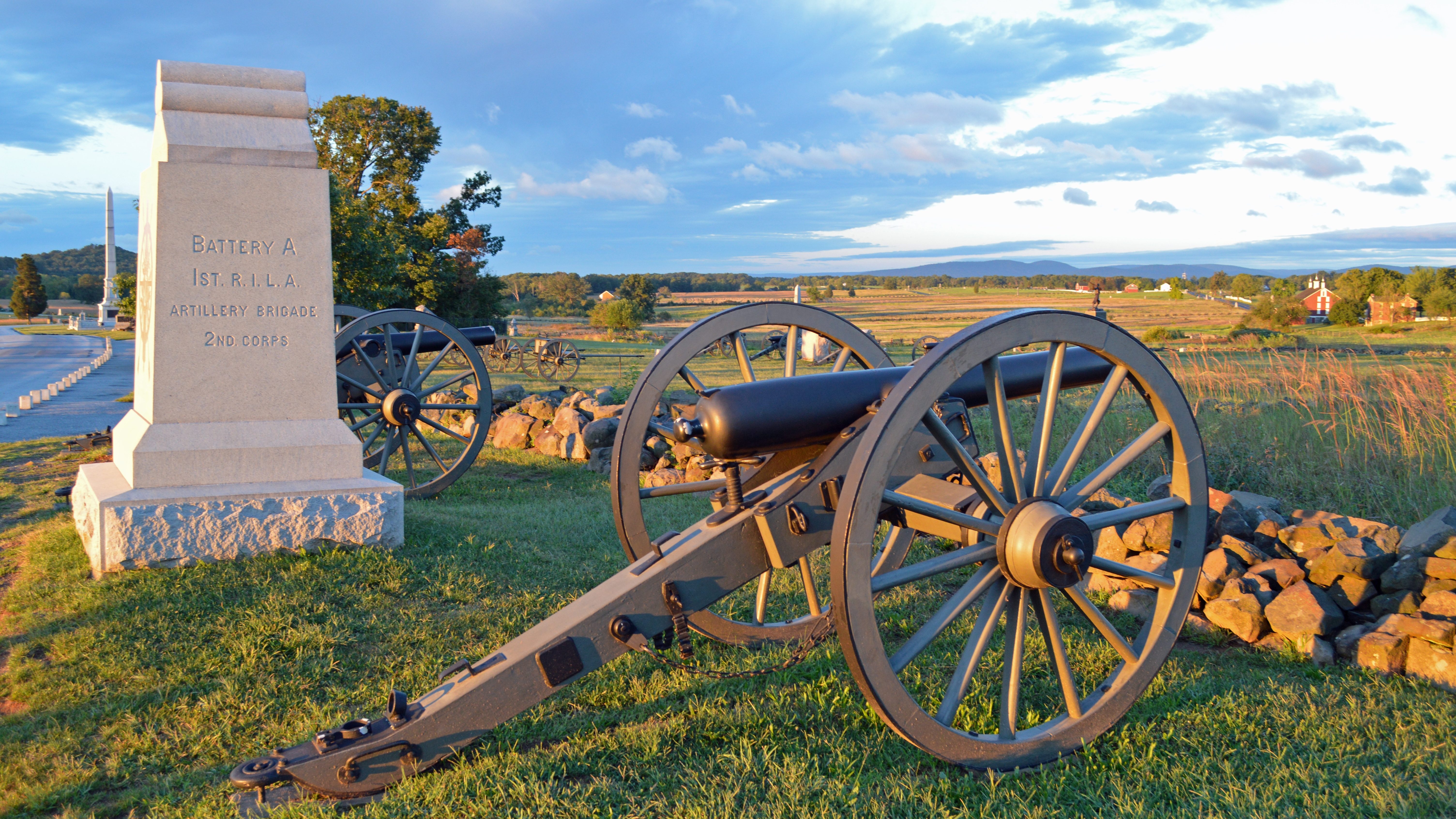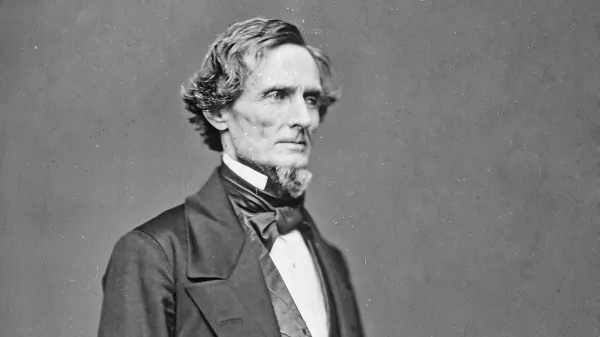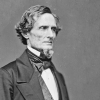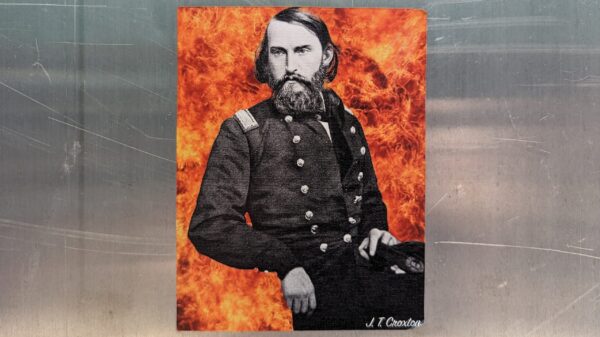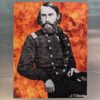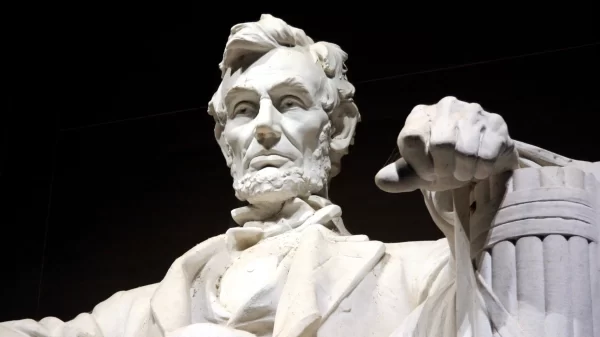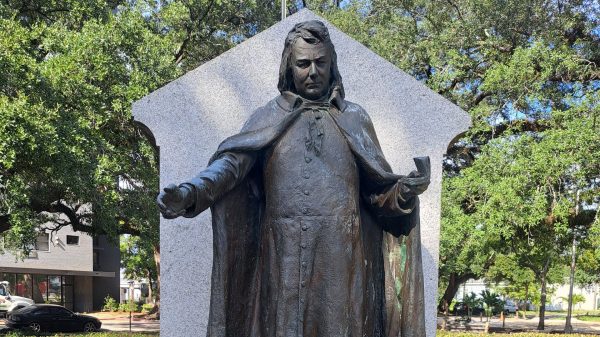On July 1, 1863 the Confederate Army of Northern Virginia met the Union Amy of the Potomac at the town of Gettysburg, Pennsylvania.
This was the second time that Confederate General Robert E. Lee invaded the Northern states. Lee hoped to defeat the Union army on Northern soil, in hopes that it would force the Lincoln administration to negotiate for peace.
President Abraham Lincoln (R) had replaced Major General Joseph Hooker with Major General George G. Meade in late June.
It was also becoming increasingly difficult for Lee to support his army from the war-ravaged farmland of Virginia. A foray north was seen as an opportunity to gather supplies, including horses. Even things like shoes were becoming hard to find in the Confederate Army.
Lee had hoped to catch the Union by surprise and be in position to threaten Washington D.C. before the Union were aware of his presence and had time to move sufficient force to defend the capitol; however the Army of the Potomac was aware of Lee’s movement north and was on an intercept course.
Lee’s cavalry commander Maj. Gen. J.E.B Stuart had not kept Lee properly informed of Union movements. On the morning of July 1st, 1863, the 8th Illinois Cavalry, part of Brigadier General John Buford’s Cavalry Division fired on the forward elements of General Robert E. Lee’s Army of Northern Virginia outside of Gettysburg. In the fighting that followed that day, Union Major General John Reynolds was killed scouting at the front.
It is rare for high ranking U.S. Army generals to be killed in combat. Reynolds joins Major Generals James B. McPherson, Joseph K. Mansfield, and John Sedgwick as the highest-ranking U.S. Army officers killed in the Civil War. Maj. Gen. Edward Canby was killed during peace negotiations by Modoc Indians in 1873 in Northern California, the highest-ranking army officer killed in the Indian Wars. Lt. General Simon Bolivar Buckner Jr., killed at the battle of Okinawa, was the highest-ranking U.S. Army officer killed in World War II. Maj. Gen. John Albert Dillard Jr. was the highest-ranking U.S. Army officer killed in the Vietnam War when his helicopter was shot down in 1970. Lt. Gen. Timothy Maude was killed in 2001 during the 9-11 attack on the Pentagon. Maj. Gen. Harold Greene was the highest-ranking U.S. Army officer killed in the War in Afghanistan in 2014 when allied Afghan troops changed sides and attacked suddenly.
The Confederate army swept the Union army from the fields west and north of town, but were unable to secure Cemetery Hill and Culp’s Hill to the south. On July 2nd re-enforcements arrived on both sides. Lee attacked on the heights and also at Little Round Top further south, but failed to dislodge the defenders.
Many historians credit Colonel Joshua Lawrence Chamberlain’s, commanding elements of his 20th Maine Volunteers and the 83rd Pennsylvania, desperate repulse of the attack by Colonel William C. Oates and his 15th Alabama with being the decisive action in the battle. Chamberlain would go on to become Governor of Maine and Oates the 29th Governor of Alabama.
By July 3rd, it was apparent that the Union, which had successfully held the Confederate forces at bay, were going to prevail. An exclamation point was added to the Union victory when Confederate General George Pickett’s out manned force charged the Union lines. They were cut to pieces.
Lee was able to extricate the surviving elements of his army and return South. Meade did not pursue, angering President Lincoln was furious, Ge felt that more aggressive action by Meade would have destroyed Lee.
Lee’s second invasion of the North ended in failure. There were heavy casualties on both sides. 3,155 Union soldiers were killed. 3,903 Confederate soldiers were killed. 14,259 Union soldiers were wounded. 18,735 Confederate soldiers were wounded. 5,365 Union soldiers were missing or captured. 5,425 Confederate soldiers were captured.
The victory did lift spirits in the North where many had begun to lose hope after Confederate victories like Chancellorsville.
Most people in the know, thought that Gettysburg combined with the surrender of another Confederate Army at Vicksburg, Mississippi would spell the end of the Confederacy. They were wrong. The South would fight on for nearly two more years, but the South could never muster the force that it had in the first half of 1863, while Union forces were increasingly bolstered by the recruitment of African-Americans eager to join the cause for the emancipation of the slaves.
Today the Gettysburg battlefield is a National Battlefield Park. This week Park Rangers and Licensed Battlefield Guides will provide a series of free guided walks and talks that discuss, explore, and reflect on this important chapter in our nation’s history on the 156th anniversary of the battle.
https://www.nps.gov/gett/index.htm
(Wikipedia and the BBC were consulted as part of this work.)




































